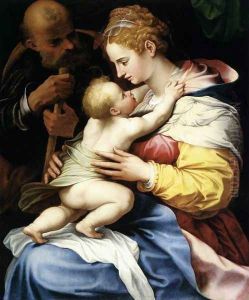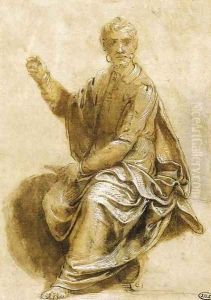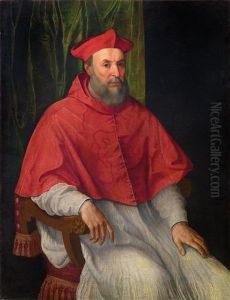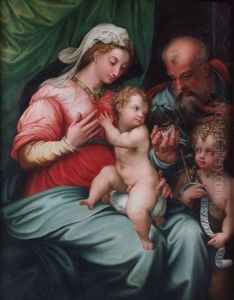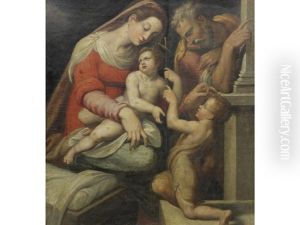Girolamo Siciolante Da Sermoneta Paintings
Girolamo Siciolante da Sermoneta was an Italian Mannerist painter active during the mid-16th century. Born in 1521 in Sermoneta, a town in the province of Latina, in the Lazio region of central Italy, Siciolante demonstrated artistic talent from a young age. His work is characterized by its graceful figures, elegant compositions, and the use of rich colors, which were typical of the Mannerist style that emerged as a reaction against the harmonious and precise High Renaissance art.
Siciolante trained under the Perugian painter Giovanni di Pietro (also known as Lo Spagna), who was a follower of Raphael. This early influence helped to shape Siciolante's approach to painting, which combined Raphael's clarity with the emerging Mannerist aesthetic. After his initial training, Siciolante moved to Rome, where he became part of the vibrant artistic community and was exposed to the works of other Mannerist painters like Parmigianino and Giulio Romano, whose styles further influenced his own.
During his career, Siciolante received commissions from prominent patrons, including religious institutions and members of the Roman aristocracy. He was known for his religious paintings, which often depicted scenes from the life of Christ and the Virgin Mary. His works are noted for their devotional quality and the emotional expressiveness of the figures. One of his most famous works is the 'Madonna with Child and Saints', which showcases his ability to create serene and harmonious compositions.
Siciolante's talent earned him a number of important commissions in Rome and throughout the Papal States. He worked on frescoes in several churches and painted altarpieces and devotional works that were praised for their piety and beauty. Despite his success, Siciolante's work was eventually overshadowed by the dominant figures of the High Renaissance and later by the Baroque artists who followed.
Girolamo Siciolante da Sermoneta's contributions to Italian Mannerism remained somewhat underappreciated until more recent art historical scholarship has shed light on his oeuvre. He passed away in 1580, leaving behind a body of work that, while not as widely recognized as some of his contemporaries, provides valuable insight into the transition from Renaissance to Mannerist art in Italy. His paintings can still be admired in various Italian churches and museums, standing as a testament to the rich tapestry of 16th-century Italian art.

